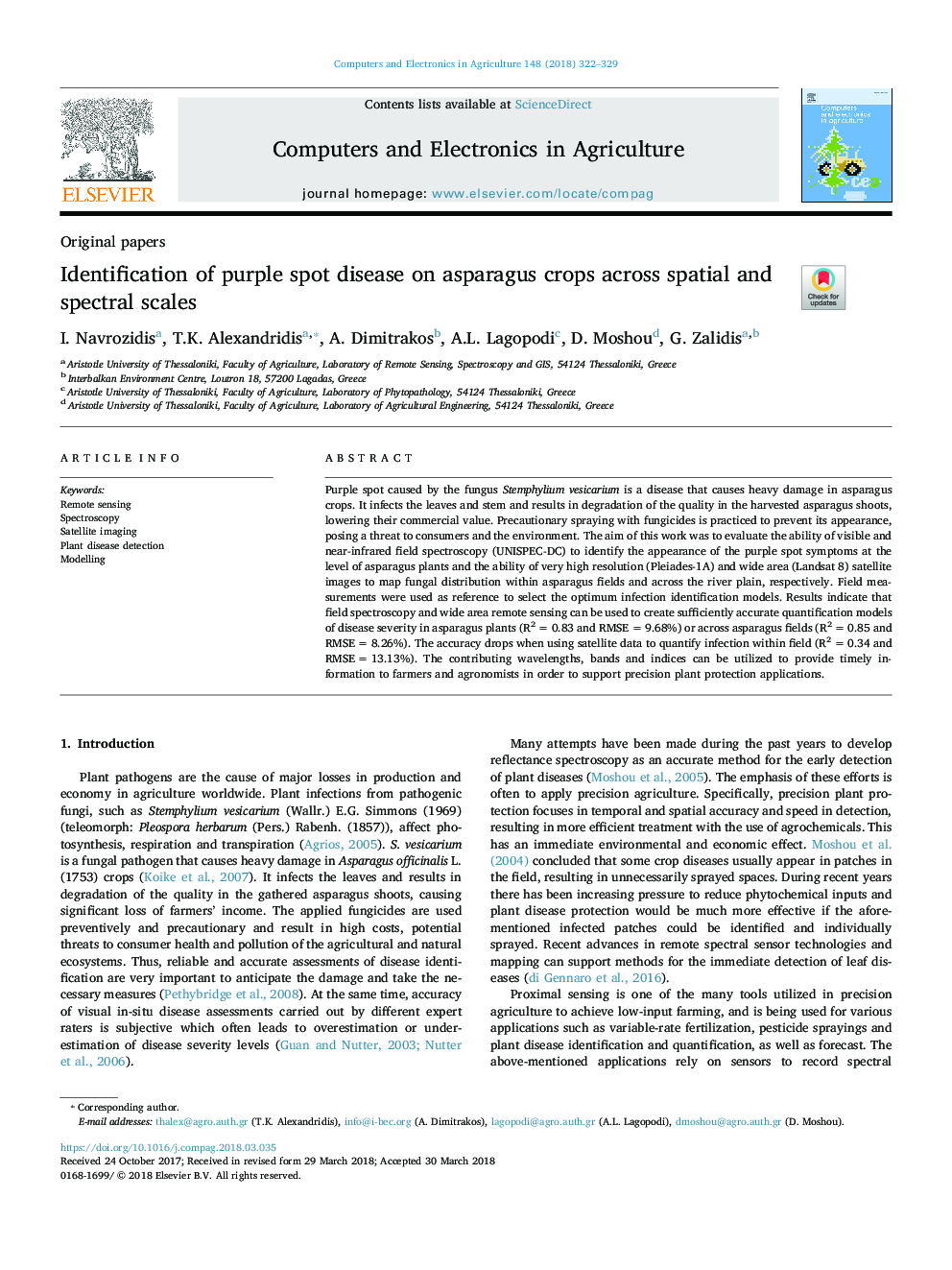| Article ID | Journal | Published Year | Pages | File Type |
|---|---|---|---|---|
| 6539587 | Computers and Electronics in Agriculture | 2018 | 8 Pages |
Abstract
Purple spot caused by the fungus Stemphylium vesicarium is a disease that causes heavy damage in asparagus crops. It infects the leaves and stem and results in degradation of the quality in the harvested asparagus shoots, lowering their commercial value. Precautionary spraying with fungicides is practiced to prevent its appearance, posing a threat to consumers and the environment. The aim of this work was to evaluate the ability of visible and near-infrared field spectroscopy (UNISPEC-DC) to identify the appearance of the purple spot symptoms at the level of asparagus plants and the ability of very high resolution (Pleiades-1A) and wide area (Landsat 8) satellite images to map fungal distribution within asparagus fields and across the river plain, respectively. Field measurements were used as reference to select the optimum infection identification models. Results indicate that field spectroscopy and wide area remote sensing can be used to create sufficiently accurate quantification models of disease severity in asparagus plants (R2â¯=â¯0.83 and RMSEâ¯=â¯9.68%) or across asparagus fields (R2â¯=â¯0.85 and RMSEâ¯=â¯8.26%). The accuracy drops when using satellite data to quantify infection within field (R2â¯=â¯0.34 and RMSEâ¯=â¯13.13%). The contributing wavelengths, bands and indices can be utilized to provide timely information to farmers and agronomists in order to support precision plant protection applications.
Related Topics
Physical Sciences and Engineering
Computer Science
Computer Science Applications
Authors
I. Navrozidis, T.K. Alexandridis, A. Dimitrakos, A.L. Lagopodi, D. Moshou, G. Zalidis,
